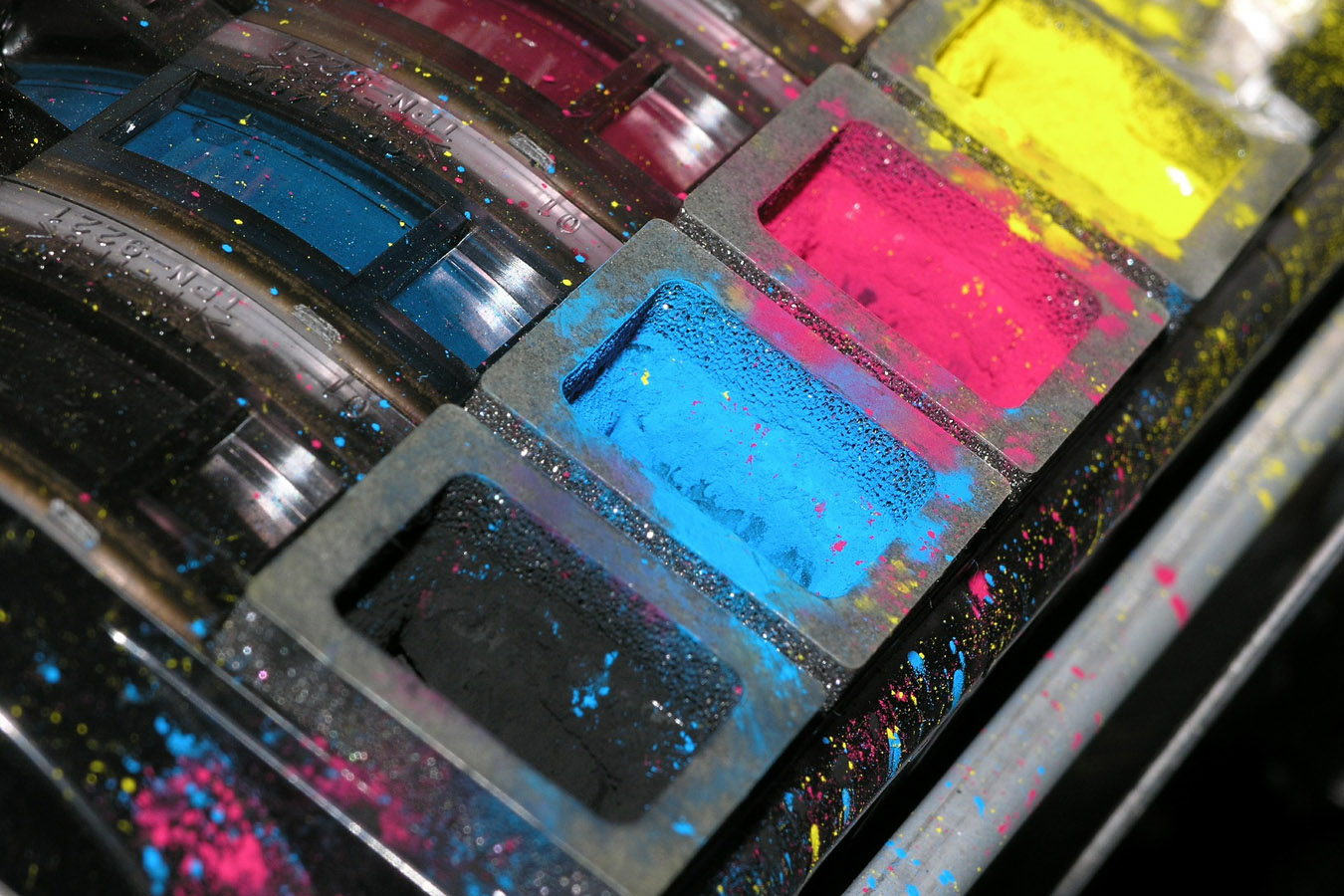 Paper
Paper

How can dry toner digital printing be described in two sentences?
Dry-Toner digital printing is the most widely-used digital printing technology. Dry-Toner printing units include Fuji, Heidelberg, Kodak Nexpress, Konika Minolta, Ricoh or Xerox. All are distinguished by their various specific printing and finishing properties. It is common for these pieces of equipment to stand out through their ability to economically print small quantities as well as producing unique, individually personalized printed products.
What is special?
Each piece of digital equipment will deliver very good print quality, offer a high degree of flexibility and good levels of production speed. Coated papers, uncoated papers, synthetic papers, adhesive papers and textured papers can all be printed. Some highlights are:
- Food-safe
- Very good de-Inking in the waste paper cycle
- Color space extensions (special colors) possible
- 3D varnish for haptic effects possible (e.g., Kodak Nexpress)
- Printing of safety features (color / varnish combination or fluorescent colors)
How does the dry toner digital press work?
The dry toner press works through a general process of technique known as electrophotography (dry).
The process
1. Charge the photoconductor
2. Transmit the image signal - point by point
3. The latent image is developed on the image leader
4. Toner is transferred to the paper
5. Toner is fixed to the paper through the heat unit
6. The image guide is cleaned => Cycle starts again
What is possible / what is not?
Possible: Combination of printing techniques (offset / digital). Printing of variable data. Small runs down to one copy.
Not possible: Already printed products cannot be printed electrophotographically. Very strongly structured papers can create runnability problems; transparent films without characteristic strips will not be recognized.
What colors are possible? Which not?
All Euroscala colors can be printed. Pantone and HKS colors must be converted into CMYK or printed as color space extensions.
What makes sense and what doesn’t?
This depends on the desired print product. It is possible to print 1 copy to high print-runs using variable print techniques (e.g., mailings). If data / variable printing is not a requirement offset printing will offer a more economical print solution from aprox. 1000 sheets onwards.
What papers are suitable – basis weight and formats?
More than 500 different substrates of coated paper, uncoated paper, synthetic paper, adhesive paper and textured paper can be used. The general substance range stretches from 60 – 300 / 350gsm. Standard formats run from 320 x 460 mm to 356 x 520 mm but there are also new, larger, machines offering formats up to 50 x 70 cm or at least 35 x 70 cm.
What applications / projects are particularly well suited to dry toner digital printing? a. Dynamic / individualized printing Self-mailing, personalized printing, certificates, brochures and adhesive bindings with interchangeable content, loose-leaf collections, b. Small editions Business cards, suitcases, hangers, flyers, stickers, labels, Preliminary runs.
How is dry toner expected to develop?
Finer resolution (better detail sharpness) Higher production speeds Larger print formats Better color reproduction by color space extension, Inline finishing Inline coating